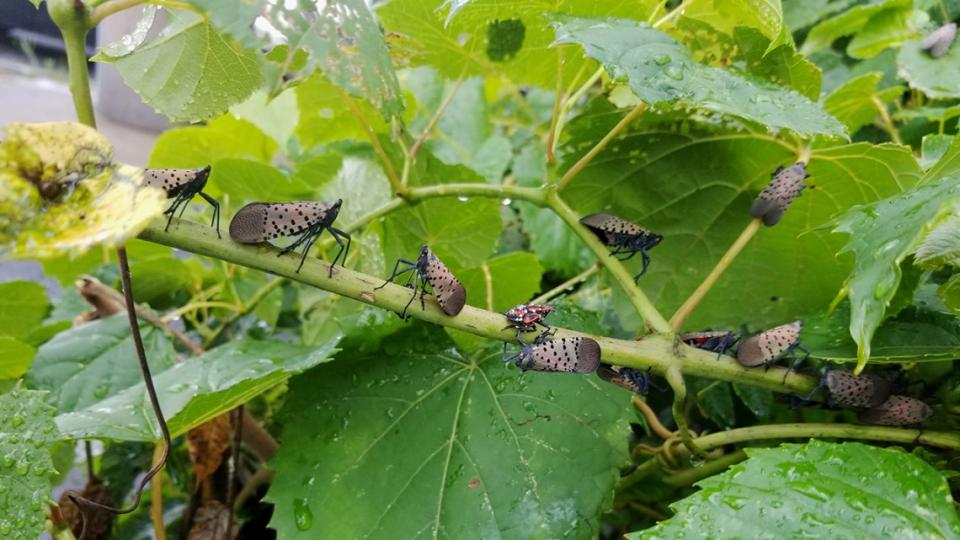The invasive spotted lanternfly is on the move, posing a threat to fruit crops. Where is it going next, and can it be stopped? USDA scientists Tracy Leskey and Laura Nixon of the Appalachian Fruit Research Station in Kearneysville, WV, have initiated research on the spotted lanternfly to see if they could develop sustainable pest management strategies and use the insect’s dispersal patterns for other prolific specialty crop pests.
The researchers collected spotted lanternfly nymphs and adults from host plants in sites within a quarantine zone in Virginia. They then measured the pest’s vertical climbing and horizontal jumping capacity and evaluated the effect of fluorescent marking powders on the nymph and adult’s mobility and ability to survive.

What can spotted lanternfly dispersal patterns reveal about the notorious pest? USDA researchers are aiming to find out. Photo by Eric Clifton/Cornell University
Each color of powder (green, blue, orange, and pink) was tested at least twice per host plant. When the presence of fluorescent powder wasn’t visible, a UV flashlight was shone onto a nymph to confirm fluorescence. To establish baseline vertical walking and horizontal jumping dispersal capacity, Leskey and Nixon also evaluated all mobile life stages using bioassays conducted under field conditions in the quarantine zone.
According to USDA, the findings were surprising. Spotted lanternfly nymphs climbed significantly longer vertical distances compared with adults, while early adults (pre-oviposition period) jumped longer horizontal distances compared with nymphs or late adults (oviposition period) based on single jump measurements.
The research also showed that marking nymphs and adults with fluorescent powder has no significant effect on vertical or horizontal movement and did not affect their mortality. Rather, the pest can be marked with fluorescent powders and retrieved from potted host plants within 24 hours. This means marking the spotted lanternfly with fluorescent powder can serve as an appropriate method for measuring their dispersal in the environment. It can ultimately help researchers understand the spotted lanternfly’s migration pattern and find a way to prevent future movement and destruction.
Leskey and Nixon are currently working to continue their research of spotted lanternfly dispersal behavior. Stay tuned.